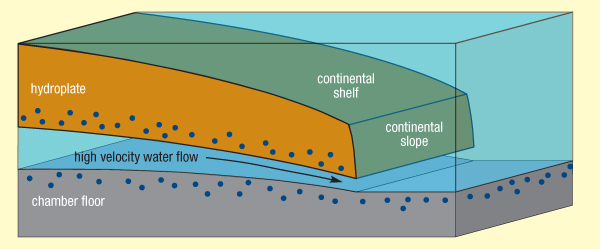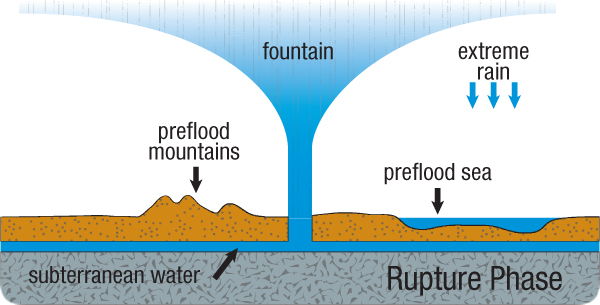I think this thread has run its course. Thanks for your time, genuineoriginal.
See you in the trenches.

I think there is one more thing to address.
Flood Phase. Each side of the rupture was basically a 10-mile-high cliff. Compressive, vibrating loads greatly exceeded the rock’s crushing strength in the bottom half of the cliff face, so the bottom half continually crumbled, collapsed, and spilled out into the jetting fountains. That removed support for the top half of the cliff, so it also fragmented and fell into the pulverizing supersonic flow. Consequently, the 46,000-mile-long rupture rapidly grew to an average width of about 800 miles all around the earth.Water trapped in the spongelike openings in the chamber’s roof and floor was steadily forced into the chamber during the flood, so the hydroplates settled slowly. Sediments swept up in the escaping flood waters gave the water a thick, muddy consistency. These sediments rapidly settled out over the earth’s surface, trapping and burying many plants and animals. The world’s fossils then began to form.
According to the Hydroplate Theory, there was an 800 mile gap between South America and Africa that was spewing water and mud up both sides of the gap onto the continents, burying plants and animals to form fossils.
The fossil beds show a continuity across oceans that cannot be explained by an 800 mile gap and sediment flowing in opposite directions on either side of the gap.
To a lot of people, it looks like the continents were joined together during the time the sediment layers were deposited.
Since the sediment layers were deposited during the flood, the continents were joined during the time of the flood, not separated as they need to be to fit the Hydroplate Theory.





